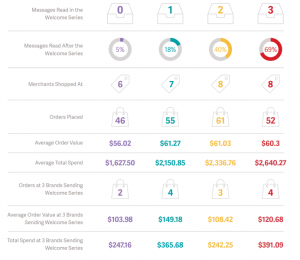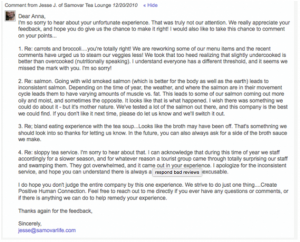— November 7, 2018
You know that understanding your target audience is an essential piece of building a powerful website, but targeting that audience is not just a consideration of the device being used. Age-responsive design takes User Experience (UX) to the next level.
Video games fluctuate depending on a player’s ability. Social media and other digital marketing campaigns shift according to the user. Why shouldn’t your website apply these same techniques to ensure each visitor is seeing exactly what they are looking for in the way that most appeals to them?
Age-Responsive Design is in its infancy when it comes to responsive fluctuation, depending on the age of any visitor; however, there are elements of this idea that can easily be applied to any website right now.

Age-Responsive Development & Design Elements to Focus on:
Your company most likely has a “target audience,” which is exactly who you should be focusing on when building your website. However, when this target audience falls across multiple age-demographics, you want to ensure your design and development choices are not abandoning any populations.
- Layout Preferences – A visitor’s eye will land on the area of the website that most influences their first impression within 2.6 seconds. Do you know where and how you’re directing their attention? And once you have it, do you allow for easy maneuverability?
- Expandable menus are intuitive to younger generations, but a hidden menu might be confusing to older users looking for traditional navigation layouts.
- “Missing elements” traditionally found on websites can be bothersome to older populations, while younger visitors might not miss a beat in understanding that clicking on a logo in the header will bring them to the homepage, for example. Older visitors prefer having the “Home” menu item and a clear “Contact” button instead of an envelope icon. In this way, “intuitive,” modern design updates don’t make sense for every audience.
- Color choices – Sensitivities to light and color contrasts, as well as the perception of colors change with age. In addition, children and younger audiences have been found to respond better to brighter colors and more saturated hues, while older audiences seem to prefer more muted palettes, such as soft pastels.
- Text choices – If given 15 minutes to explore written content, two-thirds of readers would rather engage with something attractively designed than something plain. Yes, it’s true that in most demographics, web text isn’t being read as much as it used to be; however, don’t discount your text altogether. When it’s there, it needs to be well-written and well-edited, thinking about a voice that connects with your target audience, and it needs to be well laid-out. A larger font choice (or an option for enlarging text) is important for older audiences. In addition, the amount of space between rows of text should also be greater for older audiences.
- Video vs. Text – Millennials watch more online videos than any other age group, but they are hardly alone in this trend. If your target audience includes a full spectrum of ages, be sure to include both formats of content.
- Multiple clicks vs. scrolling – Research shows that kids between 3 to 12 years of age enjoy hunting for things to click, but they don’t enjoy scrolling. On the other hand, a longer-format, easy-to-scroll website is the preference for users 18 years old and up. Requiring multiple clicks to discover what they need is to be avoided with this large range of ages.
- Patience – Teens and young adults have little patience when it comes to their website needs. If they don’t find what they are looking for immediately, they will move on. Adults over 25 do have slightly more patience, but with an average of only 5.94 seconds of attention on a webpage’s main image and 47% of users expecting a website’s load time to be under 2 seconds, that patience isn’t something to be relied upon.
Age-Responsive Design supports Hyper Targeting, maximizing your website efforts.
Whether making your website senior friendly, making a web experience appropriate for children, or anything between, these are all ideas and strategies that take time. However, putting in this time can have a dramatic impact on your connection with your community, your clients, and your leads.
Digital & Social Articles on Business 2 Community
(58)









